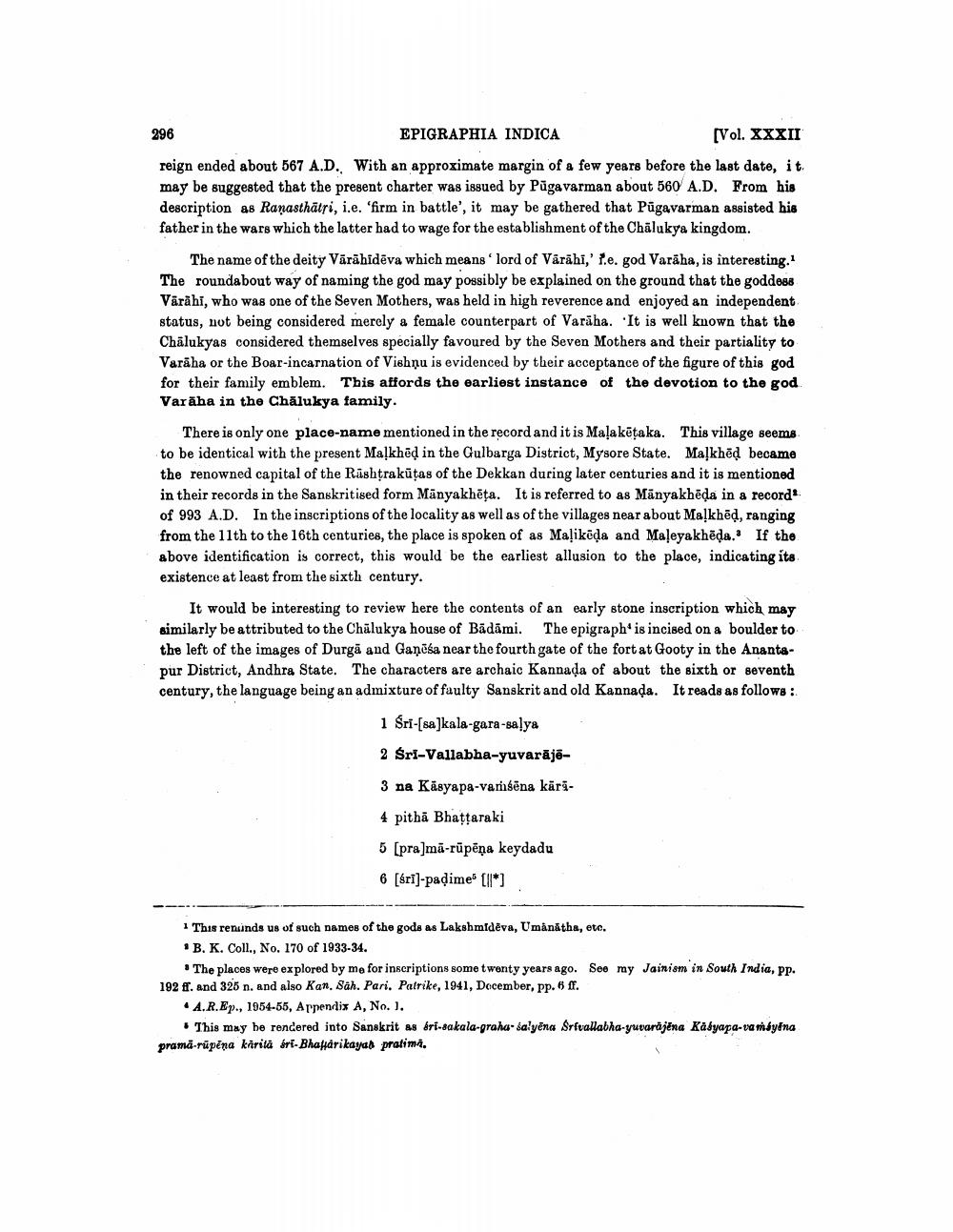________________
296
EPIGRAPHIA INDICA
[Vol. XXXII reign ended about 567 A.D., With an approximate margin of a few years before the last date, it may be suggested that the present charter was issued by Pugavarman about 560 A.D. From his description as Ranasthātri, i.e. 'firm in battle', it may be gathered that Pugavarman assisted his father in the wars which the latter had to wage for the establishment of the Chalukya kingdom.
The name of the deity Vārāhīdēva which means ' lord of Varahi,' f.e. god Varaha, is interesting.1 The roundabout way of naming the god may possibly be explained on the ground that the goddess Vārāhi, who was one of the Seven Mothers, was held in high reverence and enjoyed an independent status, not being considered merely a female counterpart of Varaha. It is well known that the Chalukyas considered themselves specially favoured by the Seven Mothers and their partiality to Varaha or the Boar-incarnation of Vishnu is evidenced by their acceptance of the figure of this god for their family emblem. This affords the earliest instance of the devotion to the god Varaha in the Chalukya family.
There is only one place-name mentioned in the record and it is Malakeṭaka. This village seems to be identical with the present Malkhed in the Gulbarga District, Mysore State. Malkheḍ became the renowned capital of the Rashtrakutas of the Dekkan during later centuries and it is mentioned in their records in the Sanskritised form Manyakhēta. It is referred to as Manyakheda in a record of 993 A.D. In the inscriptions of the locality as well as of the villages near about Malkhed, ranging from the 11th to the 16th centuries, the place is spoken of as Malikēda and Maleyakheda. If the above identification is correct, this would be the earliest allusion to the place, indicating its existence at least from the sixth century.
It would be interesting to review here the contents of an early stone inscription which may similarly be attributed to the Chalukya house of Badami. The epigraph' is incised on a boulder to the left of the images of Durga and Gaṇeśa near the fourth gate of the fort at Gooty in the Anantapur District, Andhra State. The characters are archaic Kannada of about the sixth or seventh century, the language being an admixture of faulty Sanskrit and old Kannada. It reads as follows:
1 Śri-[sa]kala-gara-salya
2 Sri-Vallabha-yuvarājē
3 na Kasyapa-vamśēna kārā
4 pitha Bhaṭṭaraki
5 [pra]m-rūpēs keydadu
6 [śri]-paḍime [*]
1 This reminds us of such names of the gods as Lakshmidēva, Umanatha, etc.
B. K. Coll., No. 170 of 1933-34.
The places were explored by me for inscriptions some twenty years ago. See my Jainism in South India, pp. 192 ff. and 325 n. and also Kan. Sah. Pari. Patrike, 1941, December, pp. 6 ff.
A.R.Ep., 1954-55, Appendix A, No. 1.
This may be rendered into Sanskrit as bri-sakala-graha-salyēna Srivallabha-yuvarājēna Kābyapa-va máyšna prama-rupēna käritä bri-Bhattarikayas pratima.




